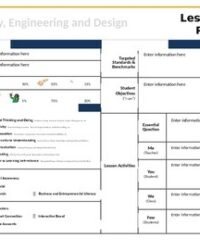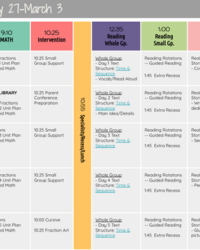The classroom of today looks vastly different from the one many of us remember. Chalkboards have given way to interactive whiteboards, textbooks are often supplemented by digital resources, and the world outside is changing at an unprecedented pace. This rapid evolution means that our teaching methods and, by extension, our lesson plans, must also transform. Simply delivering content isn’t enough anymore; we need to equip students with the skills they’ll need to navigate a complex, interconnected future. It’s about fostering innovators, critical thinkers, and adaptable individuals ready for whatever challenges come their way.
This shift isn’t just a trend; it’s a fundamental change in educational philosophy. The focus is moving from rote memorization to deep understanding, from isolated facts to interconnected knowledge, and from passive reception to active creation. So, how do we design learning experiences that truly prepare students for life beyond the classroom? The answer lies in embracing a modern approach to planning, one that goes beyond traditional structures and truly embodies the spirit of contemporary learning environments.
Embracing the Core Pillars of Modern Learning
Designing a truly effective 21st century lesson plan template involves much more than just slotting in new technologies. It’s about fundamentally rethinking what we want students to learn and, more importantly, how they will learn it. At the heart of this transformation are the four C’s: Critical Thinking, Creativity, Collaboration, and Communication. These aren’t just buzzwords; they are essential skills that empower students to analyze information, solve problems, generate new ideas, work effectively with others, and articulate their thoughts clearly in various contexts.
Critical thinking moves beyond simply understanding facts to evaluating them, identifying biases, and forming reasoned judgments. It’s about asking “why?” and “how?” rather than just “what?”. A modern lesson plan should encourage students to investigate, question, and challenge assumptions. Instead of providing all the answers, we create scenarios where students must wrestle with complex problems, evaluate different solutions, and justify their reasoning.
Creativity isn’t just for art class; it’s about innovative problem-solving and generating original ideas across all subjects. A modern lesson plan nurtures this by offering open-ended tasks, opportunities for divergent thinking, and space for students to express their understanding in unique ways. This could involve designing a solution to a local community issue, writing a persuasive argument from a different historical perspective, or even developing a game to teach a scientific concept.
Collaboration prepares students for a world where teamwork is paramount. Lessons should be designed to foster genuine group work, where students rely on each other’s strengths, negotiate differences, and co-construct knowledge. This isn’t just about dividing tasks; it’s about shared responsibility, active listening, and collective problem-solving, mirroring the collaborative environments they will encounter in higher education and the workforce.
Finally, effective communication ensures students can articulate their ideas clearly and persuasively, whether through writing, speaking, or digital media. Modern lesson plans prioritize opportunities for students to present their findings, engage in debates, write for authentic audiences, and utilize various digital tools to convey their messages. This moves beyond traditional essays to podcasts, video presentations, infographics, and more.
Crafting Your Contemporary Learning Journey
When you’re ready to build your own 21st century lesson plan, think about it as designing an experience rather than just delivering content. Each component should actively engage students and provide opportunities for them to practice those vital skills we just discussed. It’s about moving from a teacher-centric model to a learner-centric one, where students are active participants in their educational journey.
Consider how technology can be an enabler, not just an add-on. Digital tools can facilitate research, enhance collaboration, provide creative outlets, and offer immediate feedback. They can open up global connections, allowing students to learn from diverse perspectives and share their work with a wider audience. The goal is to integrate technology meaningfully to amplify learning, not merely to replace traditional methods.
A robust plan will also consider various learning styles and needs, incorporating differentiation strategies to ensure every student can access and succeed with the material. This might involve tiered assignments, flexible grouping, or providing choice in how students demonstrate their understanding. Here are some key elements you might include in your modern plan:
- Clear Learning Objectives that focus on skills and understanding, not just content recall.
- Inquiry-Based Activities that prompt student questions and exploration.
- Collaborative Projects fostering teamwork and shared problem-solving.
- Opportunities for Creative Expression through varied output formats.
- Meaningful Technology Integration that enhances learning outcomes.
- Authentic Assessments that reflect real-world application of skills.
- Reflection and Metacognition prompts for students to consider their own learning process.
- Differentiation Strategies to meet diverse student needs.
Moving forward, the power of a well-designed learning experience lies in its flexibility and responsiveness. Educators are no longer just disseminators of information; they are facilitators, mentors, and guides who empower students to become lifelong learners. By embracing these principles, we can cultivate classrooms where students are not just consumers of knowledge, but creators, innovators, and active contributors to their world.
The true measure of success isn’t just what students know, but what they can do with that knowledge. It’s about fostering curiosity, resilience, and a deep sense of purpose that will serve them long after they leave our classrooms. When we design with these outcomes in mind, we’re not just teaching subjects; we’re shaping future-ready individuals.


